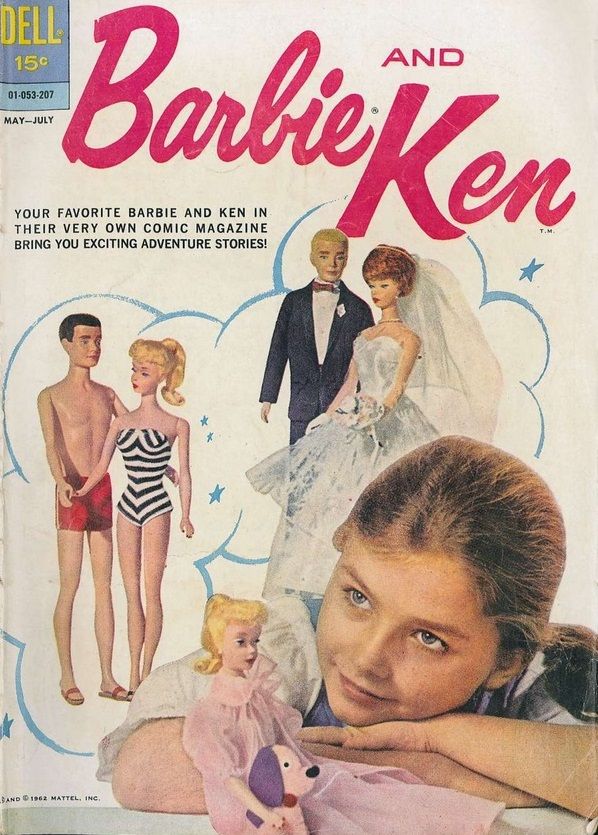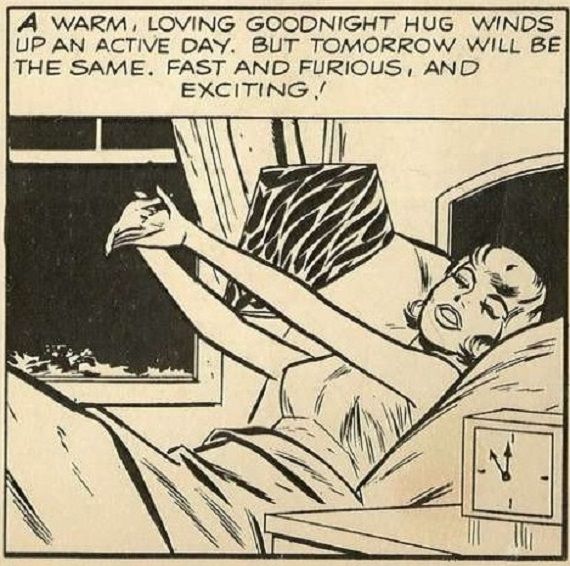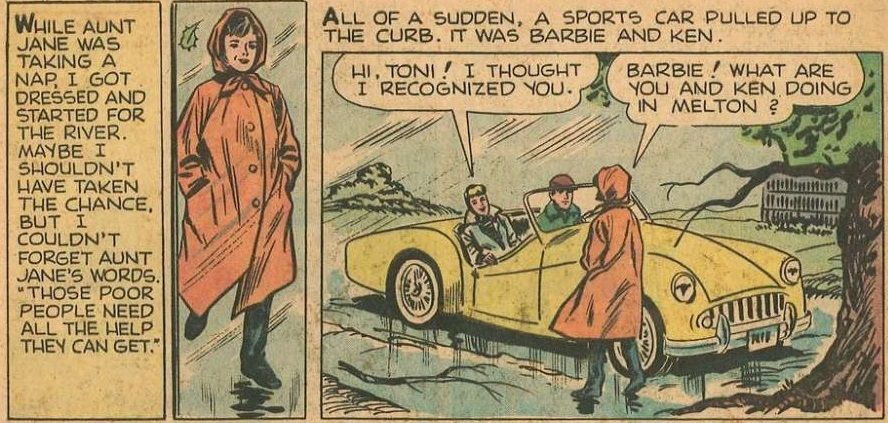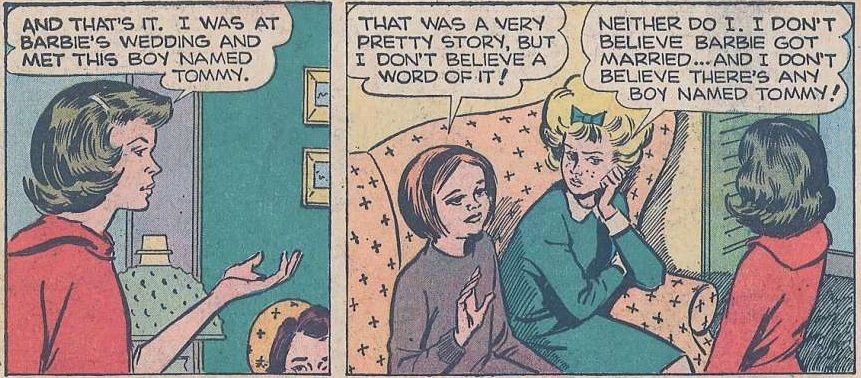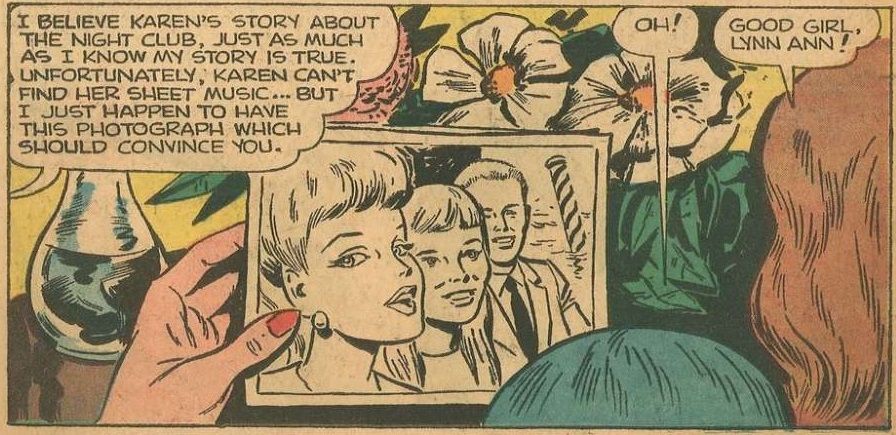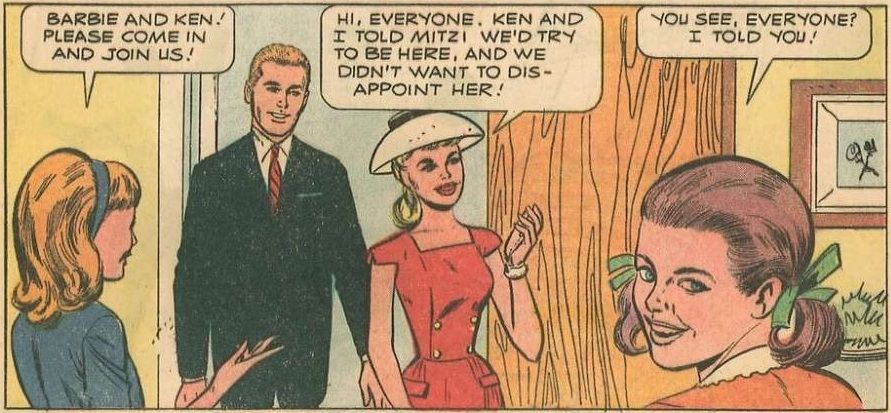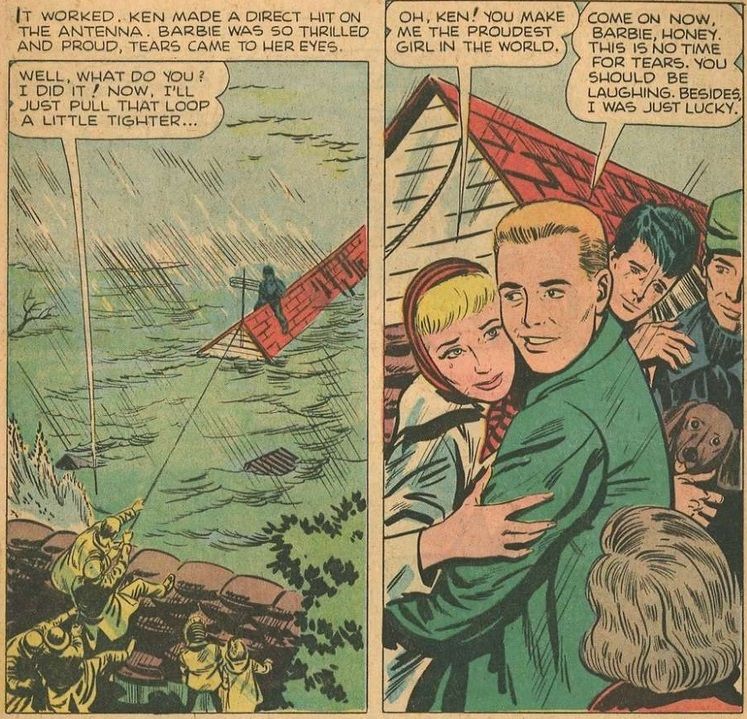Barbie and Ken debuted in 1962. The series was published by Dell, which was known for its comics based on licensed properties, including Disney and various TV shows. The covers all feature the dolls in various poses, but the interiors have actual drawings. Ken is so dead-eyed he looks like the model for the dad in The Christmas Tree. Yeah, I totally want to play with that toy! The title may make you think this is a comic about Barbie and Ken having lots of cool adventures together. You would be partly right: each issue has a couple of one-page stories about how Barbie and Ken are perfect and happy and attractive and wonderful. And G-rated. A WARM, LOVING GOODNIGHT HUG. Barbie, you HUSSY. (Judging by the extra space between “hug” and “winds,” I’d be willing to bet the original line had them kissing until some prude of a censor objected.) But the bulk of each issue actually focuses on Barbie fan clubs around the country. The club members seem to spend most of their time exchanging stories about how each girl totally met Barbie. Each story goes something like this: the girl is going about her usual business, or perhaps making a special visit to a relative. She either bumps into Barbie by accident or is introduced to her by someone else. The girl and Barbie (and sometimes Ken) then spend some quality time together, with the girl usually helping Barbie resolve some problem or other. Then they say their goodbyes, and the girl has a great story to tell at the next club meeting. On the one hand, I see the logic behind this framing device. By having each girl tell a completely different story, you can highlight Barbie’s versatility (and, probably, the number of different Barbie dolls on the market). She can be a cheerleader, a bride, a nurse, a cowgirl, a nightclub singer, and on and on. And if this was just a comic about a bunch of girls writing self-insert fan fiction, that would be a little odd, but fine. But things quickly take a turn for the unnerving. Do…do they think Barbie is a real person? And that all of these adventures actually happened? That makes the fact that Barbie knows every single girl’s name even when they’re not formally introduced more than a little disturbing. It also puts a damper on the story where Nurse Barbie lets the girl watch some random kid get his appendix removed. This skeptical reaction happened in Issue One. In Issue Two, they push the boundaries of fantasy and reality a little further. Maybe she just met some people who look like Barbie and Ken, and the other girls are such fans that they believe it’s really them? Nope, they actually exist! This opens up a whole new set of questions. How does Barbie have so many incompatible careers? Is she secretly stalking all of her fan club members for some unknown, nefarious purpose? Are she and Ken actually bored immortals who are doing this for fun? Wait, I like that explanation better. Even with all that weirdness aside, Barbie and Ken hasn’t aged well. There’s nothing overtly offensive, but you can tell this was the 1960s. Every single girl in the fan clubs is white, as is everyone they meet. Barbie is versatile in terms of career choices, but never to the point where she is allowed to outshine Ken. When Barbie is a nurse, Ken is a med student; when she is an airline hostess, he is a pilot. And, on rare occasions where they encounter someone in need of rescue, Ken charges off to save the day while Barbie stands on the sidelines, mooning over what a manly hunk of man her boyfriend is. Also, Barbie has turned into a Russian peasant for one panel. For the record, Ken is portrayed as a good boyfriend. He’s always willing to help Barbie run errands, remodel her apartment, and so on. But when it comes to their respective careers, Ken is king, no question about it. Not being an expert on Barbie’s history, I don’t know when she went from being so passive to the hero of her own story. It must have happened by the late ’90s/early ’00s: some of my favorite computer games growing up starred Barbie as a secret agent and an international explorer. And today, you can buy Barbie dolls who are nurses and doctors, home chefs and professional chefs. She can even be an astronaut! It’s a much more diverse depiction of womanhood than the 1960s would have allowed. As for Barbie and Ken, I don’t think I’d recommend it unless you’re a Barbie super-fan or are really curious about life in the early ’60s. It’s certainly an interesting artifact of an earlier time, if nothing else.
